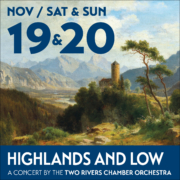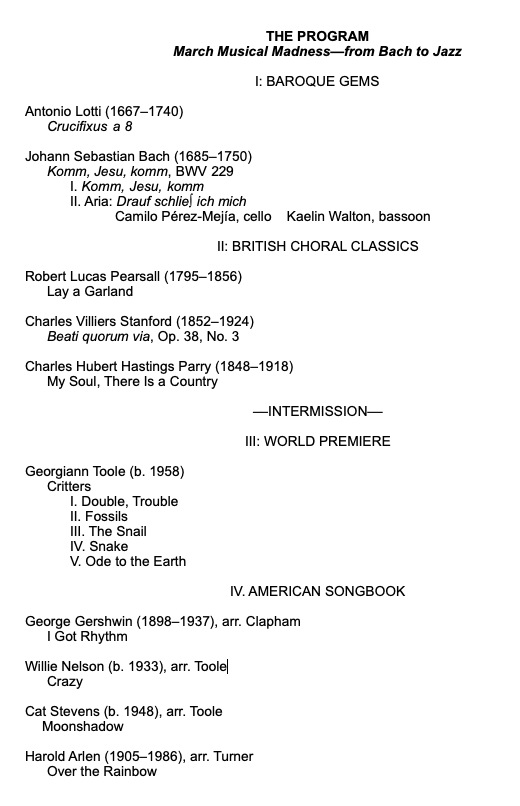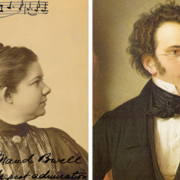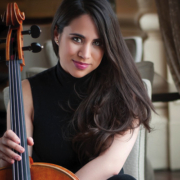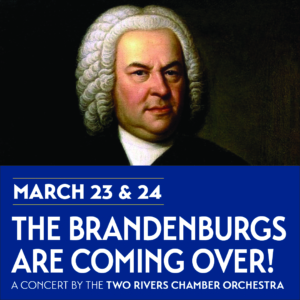 Johann Sebastian Bach
Johann Sebastian Bach
(Born in Eisenach, Germany, in 1685; died in Leipzig, Germany, in 1750)
Bach’s Time in Cöthen, Germany
German composer Johann Sebastian Bach was employed between 1717 and 1723 as the kapellmeister (music director) for the court of Prince Leopold of Cöthen (now central Germany). It was a significant time for Bach since he wrote many of his most magnificent secular instrumental works there. His musical duties were many: aside from the compulsory sacred works for worship, the Cöthen court was alive with secular music-making as well. Bach’s duties included a great deal of teaching, too, and it appears that three of his most masterful compositional sets were generated by his teaching activities. His Well-Tempered Clavier (Book I), his sonatas and partitas for solo violin, and his six suites for unaccompanied cello were all apparently written to aid in advancement of Cöthen’s many musicians. And each of these compositional sets stands at the core of Western music’s greatest accomplishments because of their excellence, beauty, and importance to the piano, violin, and cello repertoire.
Though Bach’s first years in Cöthen were happy, he soon grew a bit restless, perhaps even overwhelmed, and he suffered several tragedies — most awfully, his wife Maria Barbara Bach died unexpectedly in 1720 at age 43. A year before, in 1719, Bach by chance had met Christian Ludwig, who was the margrave (municipal ruler) of Brandenburg-Schwedt as well as the uncle of King Fredrick-William I of Prussia. At that meeting, Ludwig expressed interest in making Bach his kapellmeister, and asked him to submit a musical portfolio for review. Bach did not act on this offer at first, but around 1720, perhaps looking for a fresh start after Barbara’s death, he began to compile material for the requested portfolio. The result was a set of six instrumental works known today as the Brandenburg Concertos, which Bach completed and presented to Ludwig in 1721. But the appointment as Ludwig’s kapellmeister never materialized and the set of concertos sat on various shelves, largely unnoticed, for many years. Finally, they were discovered in a collection that belonged to a Prussian princess and published for the first time in 1849, nearly a century after Bach’s death. Nevertheless, they would not gain the worldwide popularity they have today for yet another century, in the 1960s and ’70s, when period-instrument performances became more prevalent.
In baroque musical terms, the Brandenburg Concertos are concerti grossi (“big concertos”). A concerto grosso was a work for several groups of instruments, designed to illuminate various kinds of instrumental colors, sounds and abilities, and “orchestral” textures. This form of music would evolve during the classical period into two distinct forms: symphonies, and single-instrument solo concertos. Bach’s Brandenburgs were composed for strings and wind instruments, and although they included some individual solo playing, the point of the music was less about showcasing individual instruments than about exploring contrasts between sections of instruments. The third, fourth, and fifth concertos of the six, performed in our concert, have become some of the most beloved works in Bach’s oeuvre.
The dates of many of Bach’s compositions are not certain, but it’s mainly agreed that all the ones included in our concert were written in Cöthen — giving us a unique window into a time when one of music’s most celebrated geniuses was creating a jaw-dropping number of masterpieces.
Bach
Partita No. 2 for violin in D minor, 1st movement (Allemande)
The Partita No. 2 is one of a larger set of six works titled Sonatas and Partitas for Solo Violin (BWV 1001–1006) that Bach likely wrote in 1720. Each of the six is hailed as a masterpiece and they inarguably began the trend of using the violin as a solo instrument in Western music, rather than simply as an ensemble instrument. Like the Brandenburg concertos, the Sonatas and Partitas weren’t published until almost a century later, in 1809. And then they continued to remain virtually unknown until the great Hungarian violin virtuoso Joseph Joachim (1831–1907) championed them and demonstrated their excellence to the world. By now, Partita No. 2’s most beloved movements have become the opening movement, the Allemande, which is the only movement performed in our concert, and the last movement, the Chaconne.
A baroque partita is a suite of usually six dance pieces for a solo instrument. Bach used typical baroque dances for each of his partita’s movements — courtly dance pieces like allemandes, sarabandes, and gigues (but with the surprising addition of a chaconne in No. 2).
In his partitas, Bach used these dances primarily as vehicles to highlight the poetic potency of the violin, and the allemande in his Partita No. 2 is one of his most profoundly beautiful works.
The Allemande advances slowly, in continuously unfolding 16th notes, but played at a slow speed to allow the notes to linger and the melodic line to sing. Its key of D minor gives the movement a dark hue, but as the notes progress, Bach seems to walk a miraculous line between heart-breaking pathos and a simple, beautifully drifting melody.
Bach
Brandenburg Concerto No. 3 in G major
1. No tempo marking given by Bach, but typically performed as Allegro
2. Adagio
3. Allegro
Perhaps No. 3 is the most cherished of the five Brandenburg Concertos. In any case, it is distinctly different from the other four: It is fleet; its second movement is one of the most curious movements in all Western music; and it is scored sparely, with only strings and cembalo (harpsichord) and without any winds.
The first movement (typically performed allegro) opens with a main theme first heard in the violins — a cheery and bold sequence of five short oscillating rhythms. Around this theme, Bach creates his typically brilliant web of counterpoint, which bubbles all about and underneath it. The theme is so instantly recognizable that it has almost become the theme for the whole Brandenburg set. Abounding throughout this movement is Bach’s ingenuity in exploring virtuosic instrumental pairings –– something that is a hallmark of the entire set of concertos. A delightful example of this kind of virtuosity among the instruments in this first movement occurs at about four and a half minutes, when a small kernel of the famous main theme is traded from the first violin all the way down the musical chain while the other instruments create a hubbub of accompanying music. By the end of the entire sequence, Bach has captured a frenetic and thrilling musical madness.
The second movement, Adagio, is an enigmatic expression — an evanescent moment made up of only two chords. Performers, historians, and conductors alike have pondered what Bach had in mind here. Because the Brandenburg concertos were largely ignored for nearly two centuries, we’ll never know if Bach expected the two chords to be the basis of a raft of soloistic improvisations, or a simple, two-chord bridge between the equally brisk first and third movements, or yet something else. Today, musicians and conductors allow themselves to make informed musical decisions about this movement, and thus, delightfully, the second movement is rarely performed twice in the same way. However it is played, its brevity and its unresolved chords create a moment of mysterious reflection before the next whirlwind movement of music.
The third movement, Allegro, completes this baroque masterwork, filled with light and joyfulness and dance. Bach uses the structure of the gigue for this finale, a dance form that he knew in its French variation at that time, but he infuses it with contrapuntal loftiness: Right from the beginning he creates a canon (or a “round”), first in the upper strings then repeated in the lower. But most joyous is how the music immediately sweeps us up in its spinning and dancing triplets, which continue deliriously until the breathless last bars.
Mark Janello
Free Improvisation on the harpsicord
When modern musical audiences hear the word “improvisation,” they most likely think only of jazz. But improvisation has a rich musical history, particularly in the baroque period. Bach was a master of it, as was Beethoven — and Mozart as well. Improvisation waned somewhat in the 19th century, but it was still a healthy tradition, among French organists in particular, through the first half of the 20th century. The most prominent of these organists, Marcel Jean-Jules Dupré (1886–1971), was the last major exponent of it.
Bach
Brandenburg Concerto No. 4 in G major
1. Allegro
2. Andante
3. Presto
Concerto No. 4 features, on the one hand, a delightful concertino (the group of soloists in a concerto grosso) comprising a violin and two baroque recorders, and on the other hand, orchestral strings and harpsichord. (These days, as in our concert, modern flutes are usually substituted for the recorders.)
The first movement, Allegro (fast), begins with a breezy and cheerful spinning first theme played by the concertino’s two solo flutes, rolling up and down over short, solid chords from the orchestral strings. Ultimately, though, the solo violin takes most of the limelight, while the two flutes play more of an extended, glorious duet in the background. The delightful contrasts and constant forward motion continue until the last bar.
The second movement, Andante (moderately slow), is beautiful and aching. For contrast here, Bach creates something different: the solo group and the orchestral group have a kind of dialogue and the contrasts come from the dynamics, loud versus soft. Still, there are some ingenious instrumental configurations, such as at about three minutes, when the solo violin is given the bass line to play underneath the flutes, making for a golden glow of color. A brief two-bar cadenza (improvised virtuosic solo) from the first flute brings this hypnotic movement to its final bars.
The last movement, Presto (very fast), begins with the orchestral violas introducing the main theme, which will then be treated like a brisk Fugato (in the manner of a fugue but not in strict fugue form). Other voices join the counterpoint, with the solo violin coming in soon after, creating a whole-ensemble chatter of cheeriness. After a virtuosic violin flurry at about two minutes, the concerto concludes with the entire ensemble forging ahead to the last bars with verve and joyfulness.
Bach
Cello Suite No. 4 in E-flat major, 1st movement (Prelude)
This suite is one of Six Suites for Unaccompanied Cello by Bach (BWV 1007–1012), and they are some of the most important, and celebrated, pieces written for the instrument. Just as Bach’s Sonatas and Partitas for Solo Violin are so important for the violin, these cello suites stand as one of the paramount achievements in the solo cello repertoire. Music scholars believe that the cello suites were composed in Cöthen before 1720. But these works, too, stayed virtually unknown until another great musician, the Spanish virtuoso cellist Pablo Casals (1876–1973), found an edition of the complete set of them in a Barcelona thrift shop in 1889 when he was 13 years old. Though Casals would play them publicly thereafter, he waited until he was 60 years old to begin recording them, making three separate records between 1936 and 1939. From that point on, the cello suites have become global sensations, and beloved, for both cellists and audiences.
Each cello suite begins with a prelude, and all are structured like a typical baroque dance suite, employing the following set of baroque courtly dance forms: allemande, courante, sarabande, two minuets or bourrées, and a gigue at the end. Suite No. 4 is one of the most technically challenging of the six –– the key of E-flat is extremely tricky on the fingerboard.
As well as being challenging, the prelude to Suite No. 4 is also a gorgeous testament to Bach’s sense of balance and beauty. The movement begins with the cello playing a constantly changing set of “broken chords” (the notes of the chords are “broken” apart and played individually, not simultaneously) in a steady rhythm. The broken chords saunter through a vast progression of harmonies and, most beautifully, seem to change by the second in color, like a slowly revolving kaleidoscope. Then, just after two minutes, the chords come to a stop, and a cadenza gently cascades up and down with flurries of soft notes. Though the broken chords begin again, a feeling of yearning imbues the last section, with cadenza-like flourishes returning several times before the prelude’s end.
Bach
Brandenburg Concerto No. 5 in D major, BWV 1050
1. Allegro
2. Affettuoso
3. Allegro
Bach’s daring choices for this concerto’s concertino were pathbreaking. Along with a solo violin, he adds a transverse flute and a harpsichord. The transverse flute is blown horizontally across the mouthpiece, very much like a modern flute, rather than vertically through the mouthpiece like a standard baroque recorder. In 1720, the transverse flute was not yet mainstream in Germany, and Bach’s first use of it here was an important step forward for the instrument. Bach’s use of the harpsichord as one of the soloists was also unorthodox. In the early 1700s, typical harpsichords weren’t loud enough to perform solos above a large ensemble. But the purchase of a new, bigger harpsichord for the Cöthen Court in 1719 (a purchase that Bach himself made, and which led to his chance meeting with the Marburg of Brandenburg) inspired Bach’s experiment here — and it worked, leading the way to keyboard concertos to come.
The first movement, Allegro, is a joyous affair. The first theme begins with the full orchestra and the solo violin playing a lively melody that flows up and then down, repeating each note twice, giving it texture and drive. The flute and harpsichord soon join in, but right away the harpsichord’s presence is vibrantly felt. Throughout, the trio of soloists, both alone and in pairings, have plenty of dazzling playing to do. The harpsichord most noticeably begins to play an increasingly virtuosic part, ultimately undertaking a very unexpected, extremely challenging, and breathtaking cadenza. The cadenza then leads into a final return of the orchestral opening theme to end the movement.
The second movement, Affettuoso (tenderly expressive), is also surprising as Bach scores it only for the solo trio. The tempo is slow and the mood deeply somber. The movement begins with a brief upward-motion motive with dotted rhythms, first with the violin, then the flute, then the harpsichord –– their collective voices imbuing the theme with an astonishing beauty. In this movement, the three instruments progress with this motive as soloists, as duets, and as a trio, through some of Bach’s most exquisite writing.
The final movement, Allegro, is a galloping gigue, with skipping rhythms and dancing triplets in every bar. Although the harpsichord is still prominent, this finale mainly focuses on ensemble music-making. At about three and a half minutes, Bach does something slightly unusual, at least for what we’ve heard in the Brandenburgs so far: He completely stops and plays the beginning section again, which leads us to the last, joyful bars.
Notes on Mark Janello’s free Improvisation by Jed Gaylin. All other notes
© Max Derrickson.

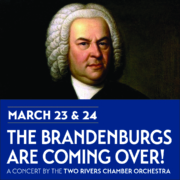
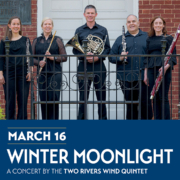
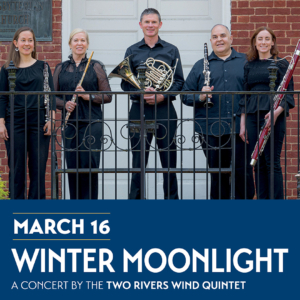 György Sándor Ligeti
György Sándor Ligeti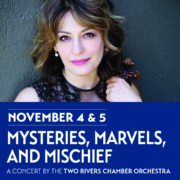
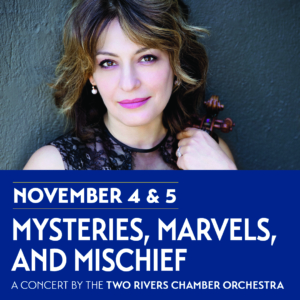 Joseph Bologne, Chevalier de Saint-Georges
Joseph Bologne, Chevalier de Saint-Georges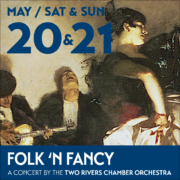
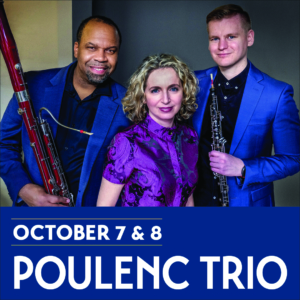
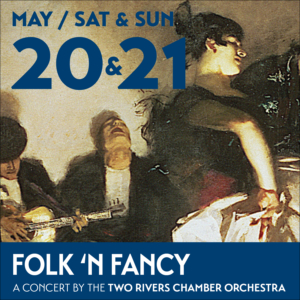 PROGRAM NOTES
PROGRAM NOTES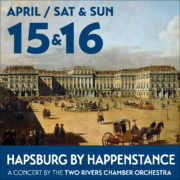
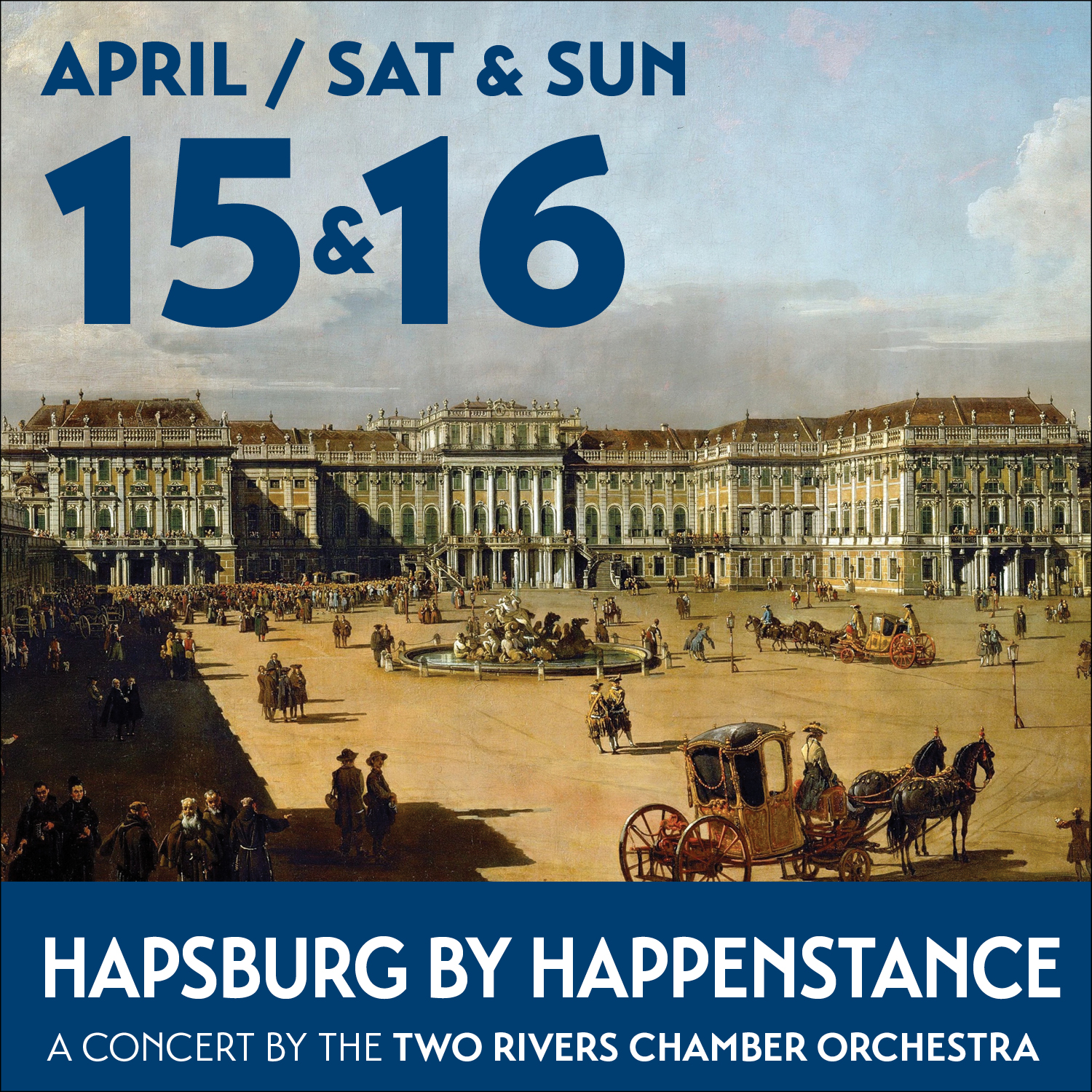 PROGRAM NOTES
PROGRAM NOTES